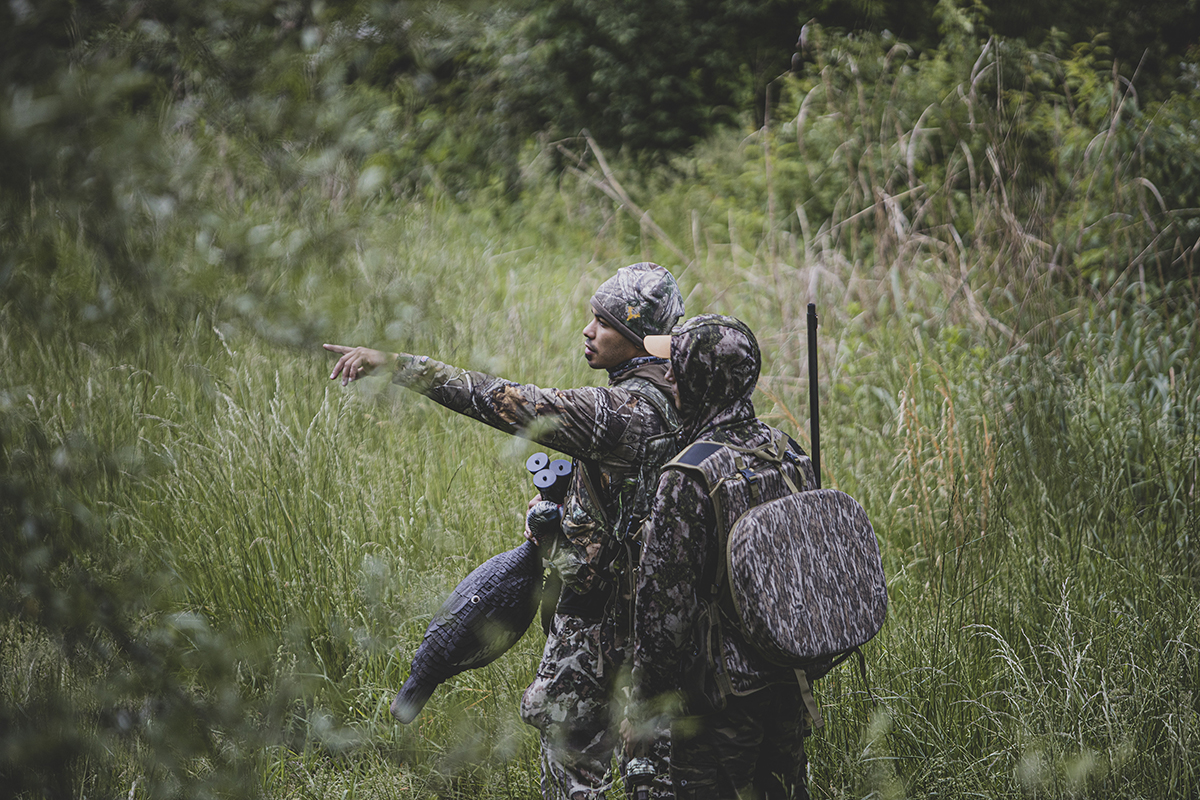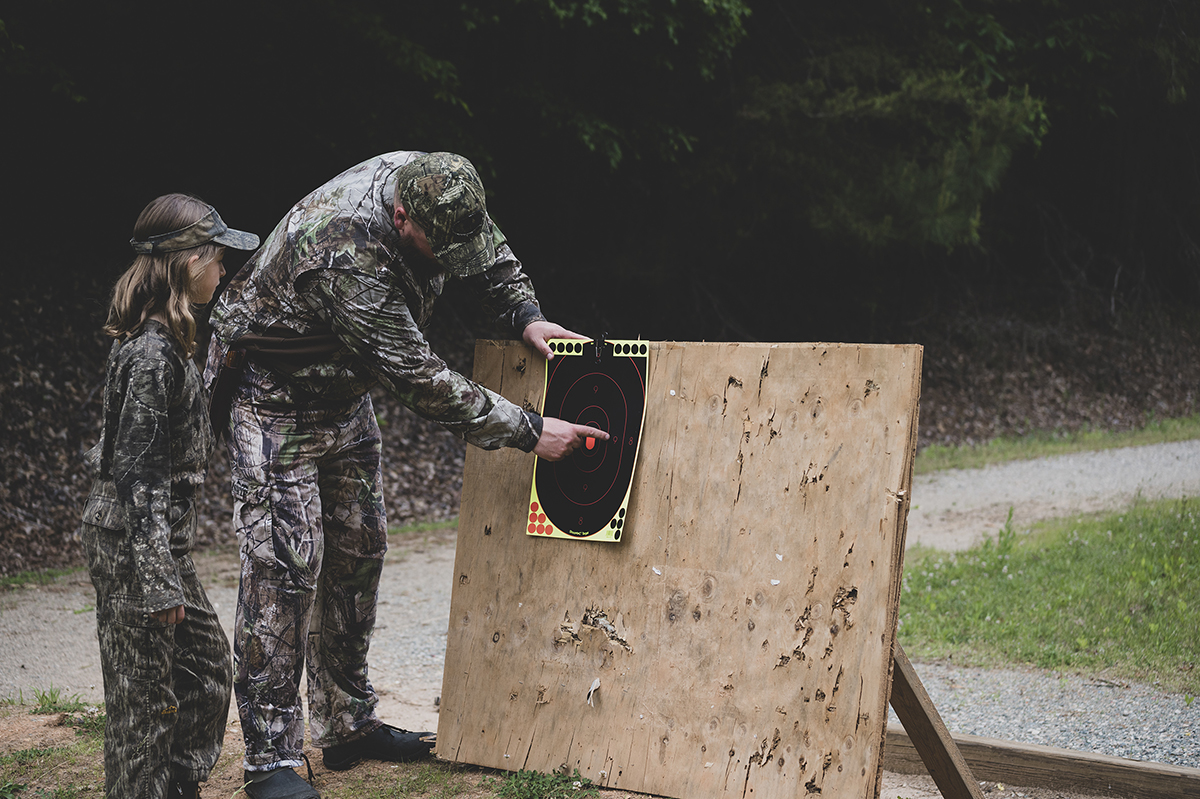By Gerald Almy
No one said spring turkey hunting is easy. If you expect to come home with game every time in the field, try a different species, maybe doves, squirrels, rabbits.
Sure, everyone has heard stories about the novice who wanders into the woods, bangs out a few yelps from his brand-new box call, and bags a tom on his first hunt ever. But for every tale like that, there are dozens of stories of veteran hunters and world-class callers being humbled by toms.
Turkeys can outwit anyone. To reduce the odds of that happening to you, use these 10 insights for tagging a coarse-bearded tom this spring.
1. Take a hike to find fresh birds. One of the consequences of the exploding popularity of spring gobbler hunting is that easy-to-reach birds are called to constantly—sometimes several times a day.
The gullible ones quickly go into a lucky hunter’s freezer. The ones left seem to know every nuance of every call made. Some will gobble once or twice. Others will answer your pleading yelps encouragingly… then turn and walk off in the opposite direction.

To find more cooperative birds, put on your hiking boots and cover ground. When you locate a tom after walking half a mile or more from the nearest vehicle access, chances are he’s heard few other hunters and is not overly wary. Thousands of turkeys in Virginia never hear a call from a hunter simply because they live out their lives far from vehicle access. If you take the time to go after these gobblers, sometimes they’ll be surprisingly easy to call in.
If hiking a mile in the dark doesn’t sound appealing, set up an overnight camp near the hunting area, but not too close to where toms like to roost.
2. Locate birds before the season, but don’t educate them. Drive dirt roads in backwoods areas such as national forests, stopping every few hundred yards to call. Walk out ridges and logging trails, listening to pinpoint gobbler locations. Try owl, crow or locator calls. But only turn to hen calls as a last resort. If you do use them, don’t call the birds all the way in. You simply want to find toms, not make them call-shy.
3. Don’t get stuck in a calling rut. When you learn to use one or two calls well, it’s human nature to turn to those calls most of the time. But different turkeys respond better to different calls, and from day to day the same bird may respond better to another call.
Turkey talk is constantly varied. The weather, stage of breeding, competition from other toms…all these things and more can influence what works best on a given day. Learn to use at least three calls with totally different sounds. The more versatile your selection is, the more likely you’ll find one that excites a specific tom.
Carry this variety over into the types of sounds you make, too, including their rhythm, cadence and number. Instead of always yelping five times with three clucks afterwards, try seven yelps with two clucks. Mix things up. Be creative and avoid predictability.

4. Don’t approach too close to the quarry. It was nearly full light when the Caroline County tom finally responded to my friend’s owl hoot. But we still figured we could slip a bit closer. The gobbler was several hundred yards away.
Moving halfway toward the bird, we picked out two trees and prepared to settle in. Unfortunately, the whoosh of huge, flapping wings made us cringe. We’d bumped him. This is one of the most common flub-ups in turkey hunting. Gobblers often sound farther away than they are. Spook the tom and the hunt is over before it even starts.
Several things can make a turkey sound farther away than it is. It could be facing away from you. There could be a rise in the terrain or dense foliage blocking the sound. Avoid walking directly towards a gobbler. Angle in from slightly above or below the sound instead.
Erring on the side of caution at least gives you a chance to call the bird in. Bump it and it’s all over.
5. Roost a gobbler. After rising before dawn and hunting hard, it’s often tempting to skip this step that requires you to stay out until sunset. Avoid the temptation. Knowing where birds are spending the night is a huge plus for the next morning’s hunt.
Go to areas where you’ve found J-shaped droppings beneath trees or where you know birds have roosted in the past and listen. Unless it’s windy you can hear toms flying up to roost on a limb from a surprisingly long distance. After they settle onto a branch, they will often respond to a crow, owl, hen or gobbler call.
Once you’ve roosted a bird, you can move in tight under cover of darkness the next morning. Give him a few soft tree yelps when he starts calling, perhaps a few clucks or a soft purr after he flies down. That should be all it takes!
6. Learn to yelp and cluck. You don’t need to know a vast repertoire of turkey vocalizations to lure in a spring tom. But you should try to perfect these two basic sounds. They’ll cover the vast majority of calling situations you’ll face. All types of turkey calls will duplicate these two crucial vocalizations turkeys use to communicate, and they’re not hard to learn.
7. Try the silent approach. At certain times, gobblers don’t talk much. You can successfully harvest these birds with a different strategy. Find the sign, set up in the area they’re using and hunt them like you were going after a wary old whitetail buck.
Look for fresh scratchings, wing-tip drag marks, droppings, and feathers to determine where gobblers have been recently. Also watch from ridges or other high spots to see where birds feed in fields or travel at certain times of day. Find a tree wider than your body to sit back against or build a simple blind and wait. Often a whole flock will eventually wander past your ambush point.
8. Cutt to fire up stubborn birds. If yelps and clucks fall flat, try cutting. This is a rapid, sharp-toned series of clucks, sometimes with a few yelps at the end. It’s a great call for eliciting a response from tight-lipped toms or for luring a suspicious bird in the final few yards for a clean shot. It’s also useful in late morning after the dawn calling frenzy has tapered off.
9. Make the shot count. Test-fire different shells to find out which patterns best in your gun. Then follow several important rules.
- Never try to shoot a bird through brush or behind even a screen of saplings or branches. The vegetation can disrupt the pattern and result in a miss. Coax the tom into a clear spot with a soft purr or cluck.
- Don’t shoot when the gobbler is in full strut, either. Wait until it drops out of strut or cluck to make it raise its head. A turkey with its neck stretched out looking at you is the best target of all.
- Make sure your cheek is down tight against the stock and the sight or scope crosshairs are lined up on the gobbler’s neck. Toms look so big and imposing at 25 or 30 yards that they tend to make hunters shoot without having their face firmly on the stock. That almost always results in a missed bird.

10. Don’t give up. Remember, turkey hunting is not easy. It takes dedication, persistence, loss of sleep, a bit of luck, and—mostly—lots of time in the woods. Days or weeks of effort may be required to successfully lure in a spring gobbler. The more hours you spend in the woods, the more chance you’ll be in the right spot at the right time when a gobbler wants to respond to calls.
If your first approach doesn’t work, change your tactics. Learn from mistakes you make.
Also realize, though, that a good turkey hunt means this: being outdoors amid the beauty of the forest, hearing birds, calling to them, perhaps even seeing the quarry. Sometimes you’ll harvest a gobbler, too. But it’s the experiences we’re out there for. And when everything lines up perfectly, the tom comes in and your shot flies true, all the effort will seem worthwhile.


